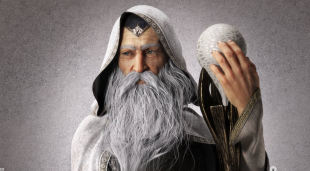The exhibition at the Musée de Bretagne in Rennes is a manipulation of history aimed at discrediting Breton regionalists and nationalists. The Bretons of to-day, the French of to-day, the Germans of to-day have a culture quite different from the Celts of the Iron Age, the Gauls of Vercingetorix, and the Germans of the same period, which does not exclude a definite filiation. Critics of the Celtic parentage of the Britons can easily demonstrate that the Iron Age Celts had a different culture. This allows them to throw the baby out with the bathwater by saying: “Celtic identity in Brittany is an invention of Breton nationalists from the late 19th century to the present day” – As Ronan Le Codic has shown, it is frequently forgotten that this story is the work of first Frankish, then French historians and above all 19th century novelists such as Balzac, Flaubert or Victor Hugo.
Another serious mistake is to exclude language from culture. If culture is passed down from generation to generation (the most relevant definition in my opinion), the Breton language, a Celtic language, has been part of Breton culture for thousands of years, and how bad it still is. No one disputes that. The museum did not mention it. As linguist Noam Chomsky wrote “Language is not just words. It is a culture, a tradition, the unification of a society, the whole history that makes a society what it is. It is all encapsulated in a language. ». The Breton language continues to transmit the Celtic spirit and a way of seeing the world inherited from the Celts of old.
Genetic parentage was completely ignored
Recent genetic studies based on the study of genetic mutations in mitochondrial DNA passed on by women and Y DNA passed on by men have unsettled some of the achievements of archaeologists and historians, particularly in migrations. DNA information can be extracted even from skeletons that are thousands of years old. Mutations occur frequently in all organisms, so the burial ground is geographically localized. Each people has its own mutations Haplogroup . Cumulative studies have confirmed the mass migration of Bretons from Great Britain to Armorica in the 5th and 6th centuries. It’s more important than we thought (see article).
But long before these studies, researchers noticed biological similarities between the Bretons, Welsh, Scots and Irish. Because diseases like hemochromatosis are common Those countries
Most Bretons who used the services Via 23andme A company based in the United States or Ancestral DNA Based in Ireland (genetic studies were banned in France) the Bretons were shown to belong mostly to the Irish-British haplogroup: the famous R1b-L21 of the Atlantic Celts. Recently, researchers from the University of Nantes and Brest highlighted the uniqueness of the Bretons and published the first map of France on the subject. [48491].
The immateriality of the collective unconscious
Beyond the languages spoken today there are other areas of ancestry with the Iron Age Celts that they share with the Britons and Irish, and haplogroups: a way of thinking, a love of a particular kind of music. An independent spiritual approach etc., an innate sense of injustice. A similar legend is shared from King Arthur and the Round Table or trans-channel tales such as Tristan and Isolt.
The Celtic Sea was a sacred place of passage and exchange between the peoples on its borders. Alan Stewell is not mistaken. He remembers We don’t care that the DNA has demonstrated over 6000 years of continuous exchanges and crossings in Brittany, Wales, Ireland and Scotland. Multiple evidences in the general Hercynian geographical and climatic environment of this European North-West in religious practices, legend, poetry, ecology, arts, social, political or legal trends.. (See article). As the psychologist Carl Gustav Jung (1875-1961) demonstrated specifically to all populations, there is much immaterial material that he called the “collective unconscious” and that we commonly call “imaginary.”
So we have with the Iron Age Celts a linguistic, biological and allegorical affinity that we share with the Welsh, Scots and Irish.
Philip Argourke

Tv fanatic. Amateur food maven. Devoted webaholic. Travel lover. Entrepreneur. Evil writer. Beer guru.



